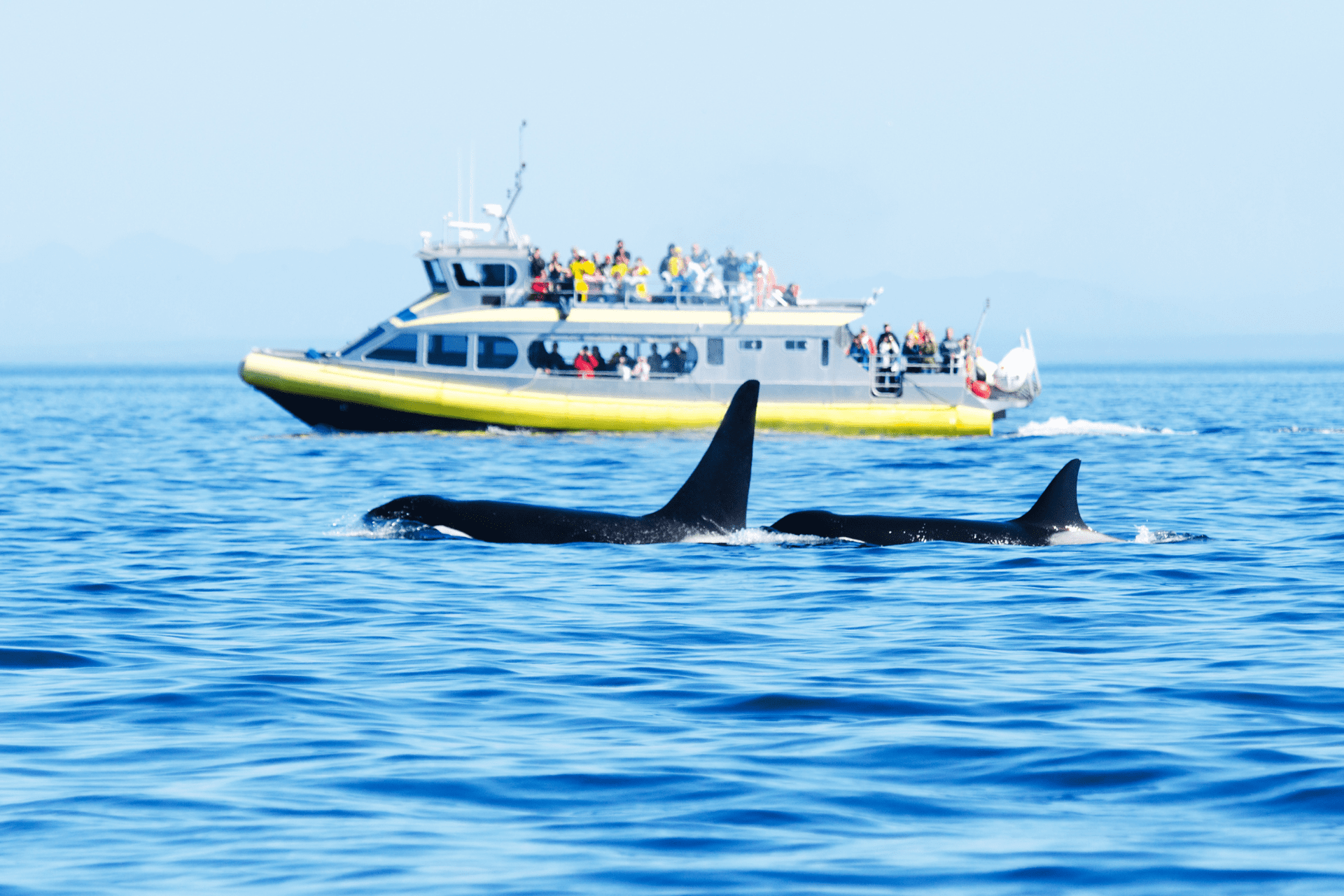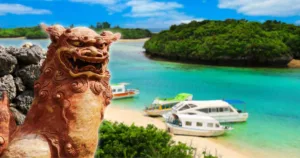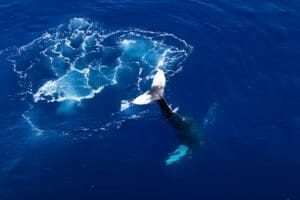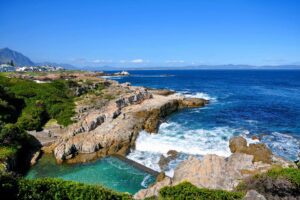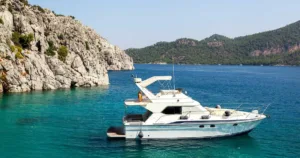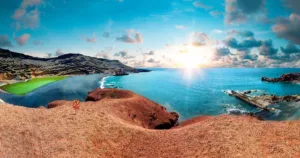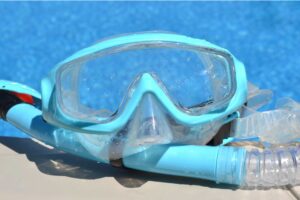Answered: Where Are The Best Places For Whale Watching?
In this comprehensive guide, we’re excited to unveil the best whale watching destinations around the world. Each location offers a unique window into the lives of these incredible creatures, from the icy waters of the Arctic to the sun-kissed coasts of the tropics. You will know all you need for planning: location, seasons, whether.
Whether you’re a seasoned whale watcher or planning your first adventure, this guide is your gateway to the most awe-inspiring whale-watching spots on the planet.
North America’s Whale Watching Havens
North America is a treasure trove of some of the most spectacular whale watching destinations in the world. From the rugged, pristine wilderness of Alaska to the sun-kissed coasts of California and the rich waters of the East Coast, each region offers a unique and unforgettable whale-watching experience.
Alaska’s Untamed Wilderness
Alaska, known for its untamed wilderness and breathtaking landscapes, is a haven for whale watchers. In the cool, nutrient-rich waters, you can see humpback whales breaching and orcas gliding gracefully through the waves. Popular spots like Juneau, the state’s remote and scenic capital, offer opportunities to see these magnificent creatures against a backdrop of towering glaciers and dense forests. Further south, Seward, nestled in the Kenai Peninsula, provides another prime location for whale watching, where the pristine beauty of Alaska’s wilderness is on full display.
Juneau, Alaska (May to September): Nestled in the stunning wilderness of Alaska, Juneau is a premier destination for whale watchers. During the summer months, the waters around Juneau become a playground for humpback whales and orcas. The sight of humpback whales performing acrobatic breaches or orcas gliding in unison is truly unforgettable.
- Weather: Summer in Juneau is mild with occasional rain.
- Temperature: Averages range from 50°F to 65°F (10°C to 18°C).
- Other Details: The region can be cloudy with some sunny days. Light layers and waterproof clothing are recommended due to unpredictable weather.
Kenai Peninsula, Alaska (May to September): Seward, located in the picturesque Kenai Peninsula, offers a unique whale-watching experience amidst Alaska’s rugged beauty. Visitors can witness humpback whales, orcas, and even gray whales. The pristine waters and the scenic backdrop of mountains and glaciers make Seward an ideal spot for nature lovers.
- Weather: Similar to Juneau, Seward experiences mild summers with a mix of rain and sunshine.
- Temperature: Temperatures range from 49°F to 63°F (9°C to 17°C).
- Other Details: The weather can change quickly; it’s advisable to be prepared for rain and chilly winds, especially on the water.
| Country | Region/City | Whale Species | Season |
|---|---|---|---|
| USA | Alaska, Juneau | Humpback Whales, Orcas | May to Sept |
| USA | Alaska, Seward | Humpback Whales, Orcas, Gray Whales | May to Sept |
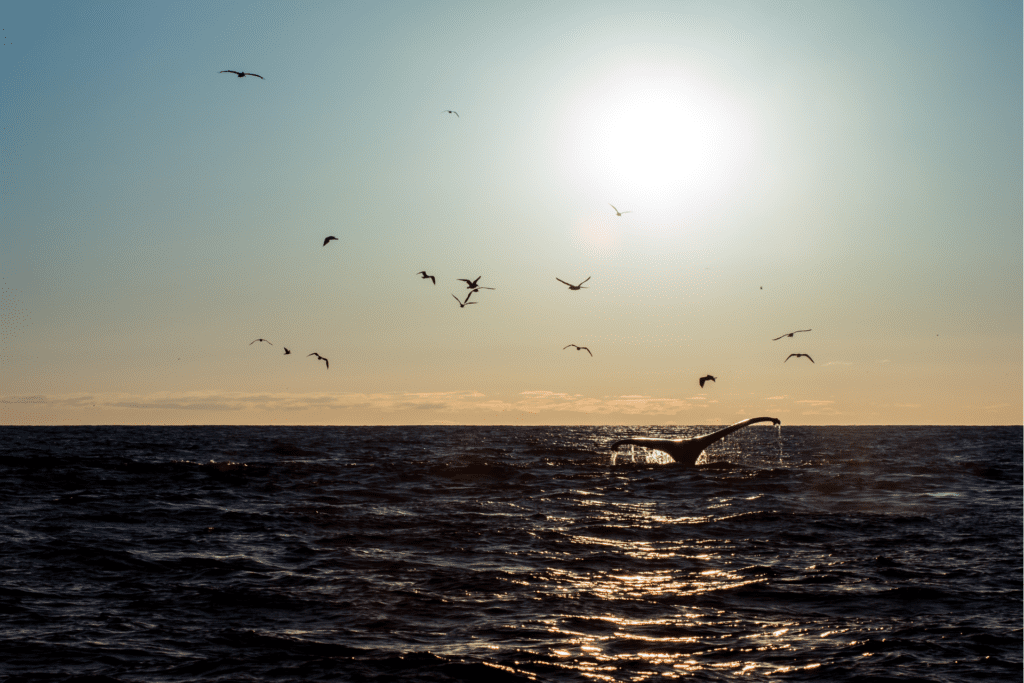

California’s Coastal Charm
California is a jewel among whale watching destinations, boasting a diverse range of marine life along its picturesque coastline. Monterey Bay, a marine sanctuary, is renowned for its year-round whale-watching opportunities. Here, you can encounter humpback whales, blue whales, and even the occasional gray whale. The Farallon Islands, just off the coast of San Francisco, are another must-visit spot. These rugged islands are a hotspot for whale watchers, offering a chance to see whales in their natural habitat and a wide variety of other marine wildlife.
Monterey Bay, California (Year-round): This marine sanctuary is a haven for diverse whale species. Monterey Bay’s unique underwater canyon provides rich feeding grounds, attracting humpback, blue, and gray whales. The bay’s accessibility and abundant marine life make it a top destination for whale watchers.
- Weather: Generally sunny and mild, but can be foggy, especially in the mornings.
- Temperature: Summer temperatures average between 57°F to 70°F (14°C to 21°C).
- Other Details: The Pacific Ocean can be cool, so a jacket is recommended for boat trips.
Farallon Islands, California (May to November): Located off the coast of San Francisco, the Farallon Islands are a hidden gem for whale watching. These remote islands are a feeding ground for several whale species, offering a chance to witness these majestic creatures in a less crowded, natural setting.
- Weather: Predominantly foggy and cool with some sunny days.
- Temperature: Ranges from 50°F to 65°F (10°C to 18°C).
- Other Details: The ocean can be rough; seasickness precautions are advisable.
| Country | Region/City | Whale Species | Season |
|---|---|---|---|
| USA | Monterey Bay, California | Humpback Whales, Blue Whales, Gray Whales | Year-round |
| USA | Farallon Islands, California | Humpback Whales, Blue Whales, Gray Whales | May to Nov |
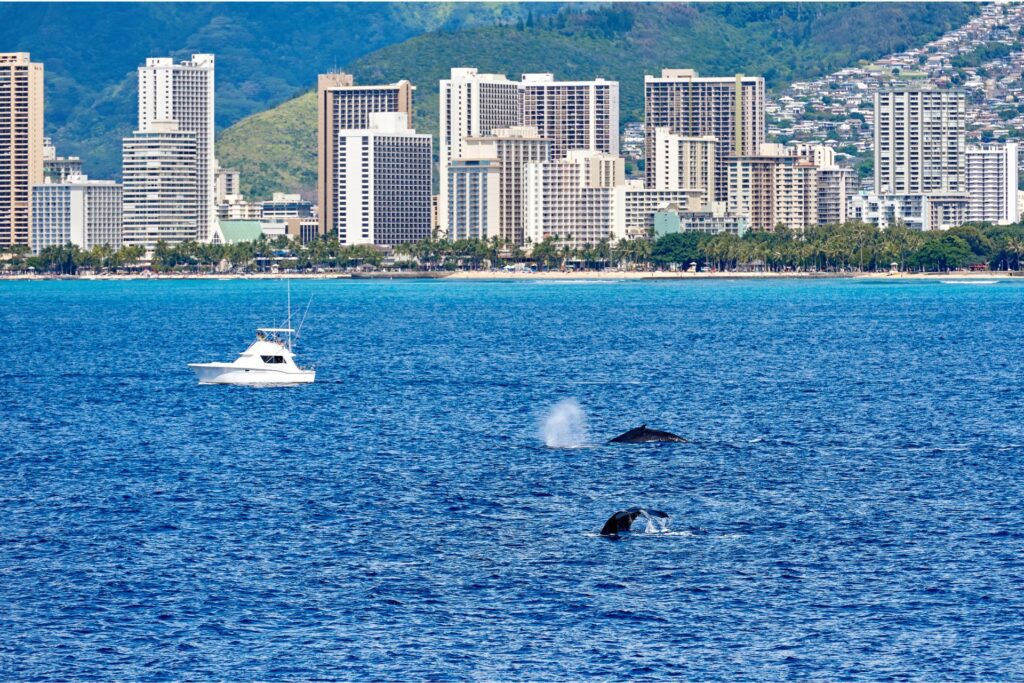

Hawaii: A Tropical Whale Watching Paradise
Maui, Hawaii (December to April): Maui is a premier destination for humpback whale watching, especially in the Auau Channel. The warm waters here are a favorite breeding ground for humpbacks, offering spectacular viewing opportunities.
Maui, known for its stunning beaches and warm climate, is a prime location for humpback whale watching. The whales migrate here for breeding, offering spectacular viewing opportunities.
- Weather: Predominantly sunny with minimal rainfall.
- Temperature: Ranges from 75°F to 85°F (24°C to 29°C).
- Other Details: Maui enjoys a tropical climate. The sea conditions are generally calm, ideal for whale watching. Sunscreen and light clothing are advisable.
| Country | Region/City | Whale Species | Season |
|---|---|---|---|
| USA | Maui, Hawaii | Humpback Whales | December to April |
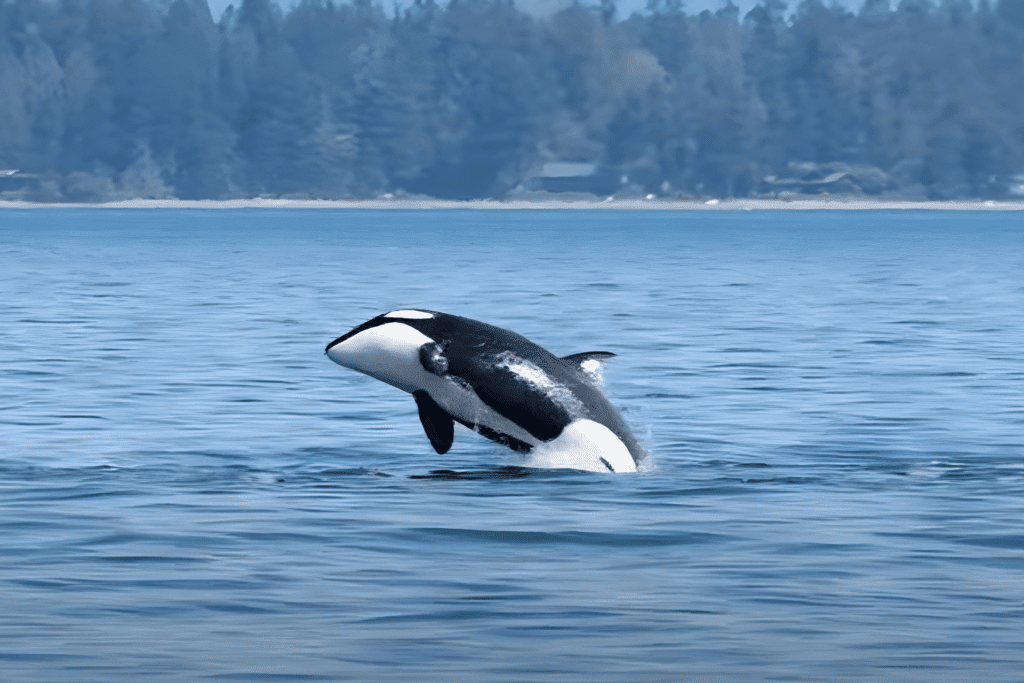

The East Coast Experience
The East Coast of North America is not to be overlooked regarding prime whale watching destinations. With its quaint charm and rich maritime history, Cape Cod is a hub for whale watching, especially known for sightings of humpback and fin whales. Further north, the Bay of Fundy in Canada is a marvel of nature, famous for having the highest tides in the world and being a feeding ground for several whale species, including the rare North Atlantic right whale. The unique tidal phenomenon of the bay creates an abundant feeding area for whales, making it a premier destination for enthusiasts and researchers alike.
Cape Cod, Massachusetts (April to October): Cape Cod’s rich waters are a magnet for humpback and fin whales. The region’s unique geography creates an ideal habitat for these species, making it a popular spot for whale watchers. The charm of Cape Cod, combined with the thrill of whale watching, creates a memorable experience.
- Weather: Generally sunny with occasional rain showers.
- Temperature: Summer temperatures range from 60°F to 80°F (16°C to 27°C).
- Other Details: Weather can be unpredictable; layers and a waterproof jacket are recommended.
Stellwagen Bank, Massachusetts (April to October): Located off the coast of Massachusetts, this sanctuary is a feeding ground for various whale species. Its proximity to Boston makes it an accessible and popular whale-watching spot. This marine sanctuary near Boston is a feeding ground for various whale species. Its rich biodiversity and accessibility make it a popular whale watching destination.
- Weather: Variable, ranging from sunny to overcast with occasional rain.
- Temperature: Ranges from 50°F to 75°F (10°C to 24°C).
- Other Details: Weather can be unpredictable. Sea conditions can vary from calm to moderately choppy. Layered clothing and waterproof gear are recommended.
Bay of Fundy, Canada (June to September): Known for the world’s highest tides, the Bay of Fundy in Canada is a vital feeding ground for whales. The tidal action stirs up nutrients, attracting humpback whales and the rare North Atlantic right whale. This area offers a unique opportunity to observe these magnificent creatures in a spectacular natural setting.
- Weather: Mostly sunny with some rainy days.
- Temperature: Summer temperatures average between 55°F to 75°F (13°C to 24°C).
- Other Details: The Bay area can be windy, and fog is not uncommon. Dressing in layers is advisable.
Vancouver Island, British Columbia (May to October): Vancouver Island, located off Canada’s Pacific Coast, is a world-renowned whale watching destination. The island’s waters are particularly famous for their resident and transient orca populations, making it one of the best places in the world to see these iconic black-and-white whales. In addition to orcas, visitors can also spot humpback whales and gray whales, especially during their migration seasons.
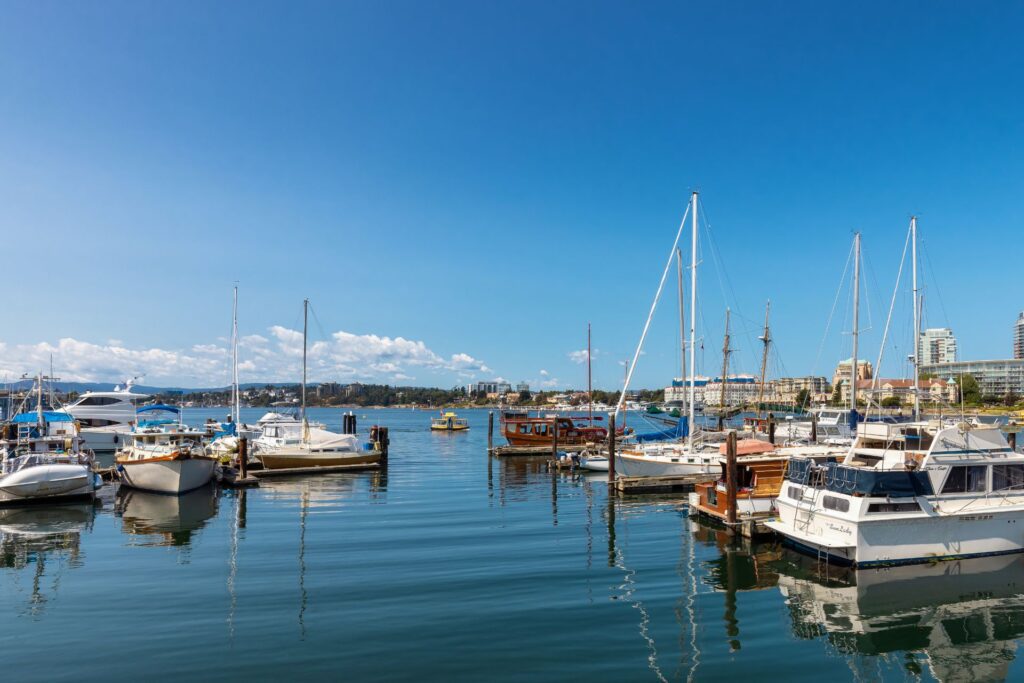

The whale watching season on Vancouver Island typically runs from May to October. During this time, the nutrient-rich waters around the island attract a variety of marine life, providing ample feeding opportunities for the whales. The presence of these magnificent creatures, set against the backdrop of the island’s stunning natural scenery, offers an unforgettable experience for nature lovers and wildlife enthusiasts.
- Weather: The weather during this period is generally mild, with a mix of sunny and overcast days. Rain is less frequent in the summer months but can occur.
- Temperature: Ranges from 50°F to 70°F (10°C to 21°C). The temperature is cooler in May and October and warmer in the mid-summer months (July and August).
- Other Details: The area can experience breezy conditions, especially on the water. It’s advisable to be prepared for windy conditions during boat tours. The sea waters can be relatively calm, but conditions can change, so checking local marine forecasts is important. Layered clothing is recommended as temperatures can vary throughout the day and be cooler on the water. Waterproof gear can be useful for unexpected rain showers. The UV index can be high on sunny days, so sun protection (sunscreen, hats, sunglasses) is important.
| Country | Region/City | Whale Species | Season |
|---|---|---|---|
| USA | Cape Cod, Massachusetts | Humpback Whales, Fin Whales | April to Oct |
| USA | Stellwagen Bank National Marine Sanctuary, Boston, Massachusetts | Humpback Whales, Fin Whales, Minke Whales | April to October |
| Canada | Bay of Fundy, New Brunswick and Nova Scotia | Humpback Whales, North Atlantic Right Whales | June to Sept |
| Canada | Vancouver Island, British Columbia | Orcas, Humpback Whales, Gray Whales | May to October |
Europe’s Whale Watching Gems
Europe offers a diverse array of whale watching destinations, each with its unique charm and species of whales. From the icy waters of Iceland and Norway to the temperate seas of Portugal, Scotland, and Spain, these locations provide unforgettable experiences for whale enthusiasts.
Greenland’s Arctic Majesty: A Whale Watching Haven
Greenland, often referred to as Greenlandia, stands out as a premier destination for whale watching, combining its Arctic majesty with abundant marine life.
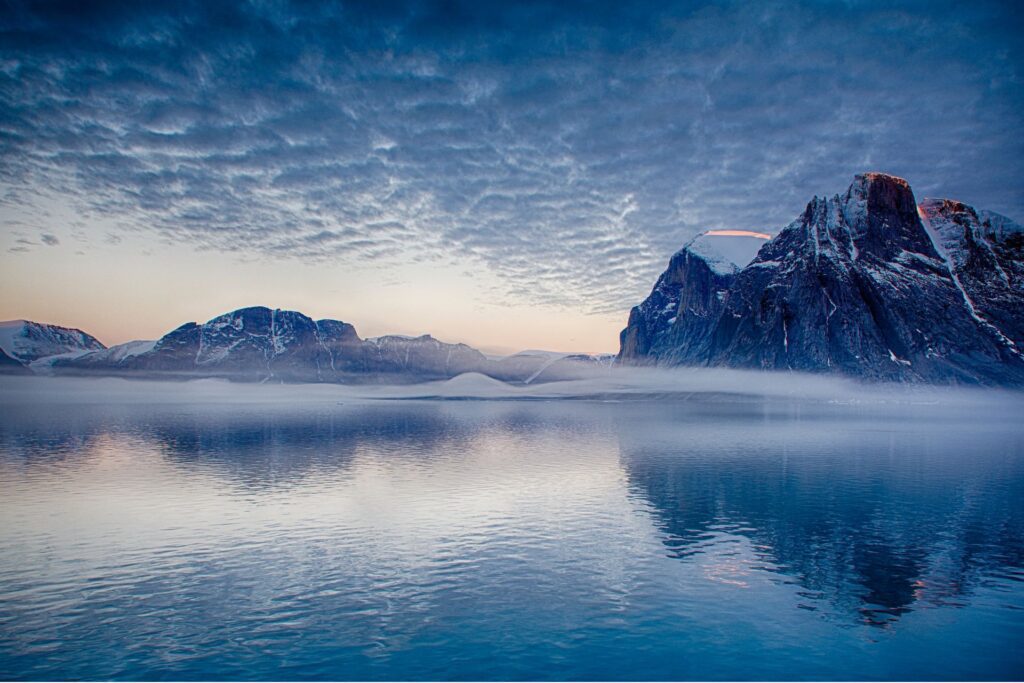

Greenland’s combination of Arctic landscapes, rich marine ecosystems, and cultural heritage makes it a unique and compelling destination for whale watchers and nature enthusiasts alike. The opportunity to observe these majestic creatures in such a pristine and dramatic setting is an experience that resonates long after the journey ends.
Disko Bay (June to September): This bay is a paradise for whale watchers, offering frequent sightings of humpback and minke whales among colossal icebergs. The summer months bring these whales to feed in the nutrient-rich waters, providing spectacular viewing opportunities against the backdrop of Greenland’s stunning ice landscapes.
- Weather: Mostly sunny with occasional fog.
- Temperature: Ranges from 35°F to 50°F (2°C to 10°C).
- Other Details: The area can be windy, especially in open waters. Sea conditions are generally calm near the bay, but can vary.
Nuuk Fjord (June to September): Close to Greenland’s capital, Nuuk Fjord combines the convenience of urban amenities with the thrill of whale watching. Humpback and minke whales are often seen here, sometimes even from the city’s shoreline, making it an accessible option for those who wish to combine whale watching with other tourist activities.
- Weather: Mix of sunny and overcast days, with occasional rain.
- Temperature: Averages around 37°F to 50°F (3°C to 10°C).
- Other Details: Weather can change rapidly; fog is common in the fjord.
Qaqortoq and the Southern Coast (June to September): The southern coast, particularly around Qaqortoq, is known for its diverse marine life. Here, one can spot humpback whales, the impressive fin whales, and occasionally the majestic blue whale. The area’s serene waters and scenic coastal landscapes enhance the whale-watching experience.
- Weather: Generally sunny with some rainy days.
- Temperature: Ranges from 40°F to 55°F (4°C to 13°C).
- Other Details: The region experiences less fog compared to other parts of Greenland, offering clearer visibility for whale watching.
Ilulissat Icefjord (June to September): A UNESCO World Heritage Site, the Ilulissat Icefjord is a place of immense natural beauty and a prime location for humpback whale sightings. The presence of these whales amidst the towering icebergs creates a truly mesmerizing spectacle.
- Weather: Predominantly sunny, with some cloudy days.
- Temperature: Averages between 35°F to 50°F (2°C to 10°C).
- Other Details: The presence of icebergs can lead to cooler local temperatures and occasional fog.
East Greenland (June to September): For those seeking a more off-the-beaten-path experience, East Greenland offers a chance to see a variety of whale species in a more secluded setting. The region’s untouched nature and less crowded waters make for an intimate and unforgettable whale-watching adventure.
- Weather: Variable, with a mix of sunny, cloudy, and rainy days.
- Temperature: Ranges from 33°F to 50°F (1°C to 10°C).
- Other Details: This region is more remote and less developed, so visitors should be prepared for more rugged conditions.
| Country | Region/City | Whale Species | Season |
|---|---|---|---|
| Greenland | Disko Bay | Humpback Whales, Minke Whales | June to September |
| Greenland | Nuuk Fjord | Humpback Whales, Minke Whales | June to September |
| Greenland | Qaqortoq and Southern Coast | Humpback Whales, Fin Whales, Blue Whales | June to September |
| Greenland | Ilulissat Icefjord | Humpback Whales | June to September |
| Greenland | East Greenland | Various Species | June to September |
Iceland’s Arctic Wonders
Iceland, a land of stark beauty and natural wonders, is one of Europe’s premier whale watching destinations. Husavik, often called the whale-watching capital of Iceland, offers sightings of humpback, minke, and sometimes even blue whales. The charming town’s picturesque harbor and stunning backdrop provide an ideal whale-watching setting. Reykjavik, the nation’s capital, also offers whale-watching tours, where visitors can enjoy the blend of vibrant city life and the thrill of encountering whales in the nearby waters.
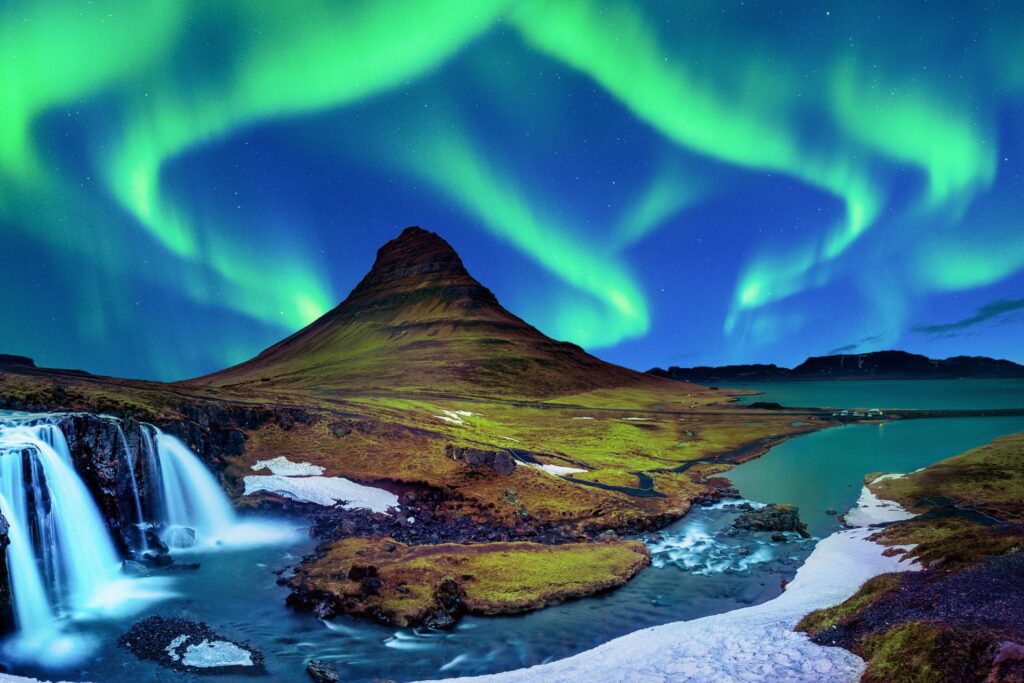

Husavik, Iceland (April to October): Known as the whale-watching capital of Iceland, Husavik offers encounters with humpbacks, minke, and occasionally blue whales. The best time to visit is from April to October when the waters are teeming with marine life. The charming town provides a perfect backdrop for this awe-inspiring experience.
- Weather: Variable, with a mix of sunny, cloudy, and rainy days.
- Temperature: Ranges from 37°F to 57°F (3°C to 14°C).
- Other Details: Weather can change rapidly; layers and waterproof clothing are essential. Windy conditions are common.
Reykjavik, Iceland (May to September): Iceland’s capital, Reykjavik, offers whale-watching tours where minke whales and dolphins are commonly sighted. The season runs from May to September, offering a unique combination of urban culture and natural wonder.
- Weather: Similar to Husavik, with a mix of sun, clouds, and occasional rain.
- Temperature: Averages between 42°F to 57°F (6°C to 14°C).
- Other Details: Windy conditions are typical. Dressing in layers is recommended due to the unpredictable weather.
| Country | Region/City | Whale Species | Season |
|---|---|---|---|
| Iceland | Husavik | Humpback, Minke, Blue Whales | April to October |
| Iceland | Reykjavik | Minke Whales, Dolphins | May to September |
Norway’s Fjord Adventures
Norway’s dramatic fjords provide a breathtaking setting for whale watching. Tromsø, located above the Arctic Circle, is a prime spot for witnessing the majestic orcas and humpback whales, especially during the winter months when they follow the herring into the fjords. The experience of watching these magnificent creatures with the stunning Northern Lights as a backdrop is truly a once-in-a-lifetime experience.
Tromsø, Norway (November to January): Situated above the Arctic Circle, Tromsø is a prime location for viewing orcas and humpback whales. The winter months, particularly from November to January, are the best time to witness these majestic creatures following the herring into the fjords.
- Weather: Cold and snowy, with short daylight hours.
- Temperature: Ranges from 24°F to 30°F (-4°C to -1°C).
- Other Details: Northern Lights are a possible sight. Warm, insulated clothing is necessary for the cold Arctic climate.
| Country | Region/City | Whale Species | Season |
|---|---|---|---|
| Norway | Tromsø | Orcas, Humpback Whales | November to January |
Portugal’s Azores
The Azores, a group of islands in the mid-Atlantic belonging to Portugal, are a hidden gem for whale watching. The deep waters around these volcanic islands are home to sperm whales, blue whales, and several dolphin species. The Azores offer a serene and relatively untouched environment for whale watching, making it a must-visit destination for nature lovers.
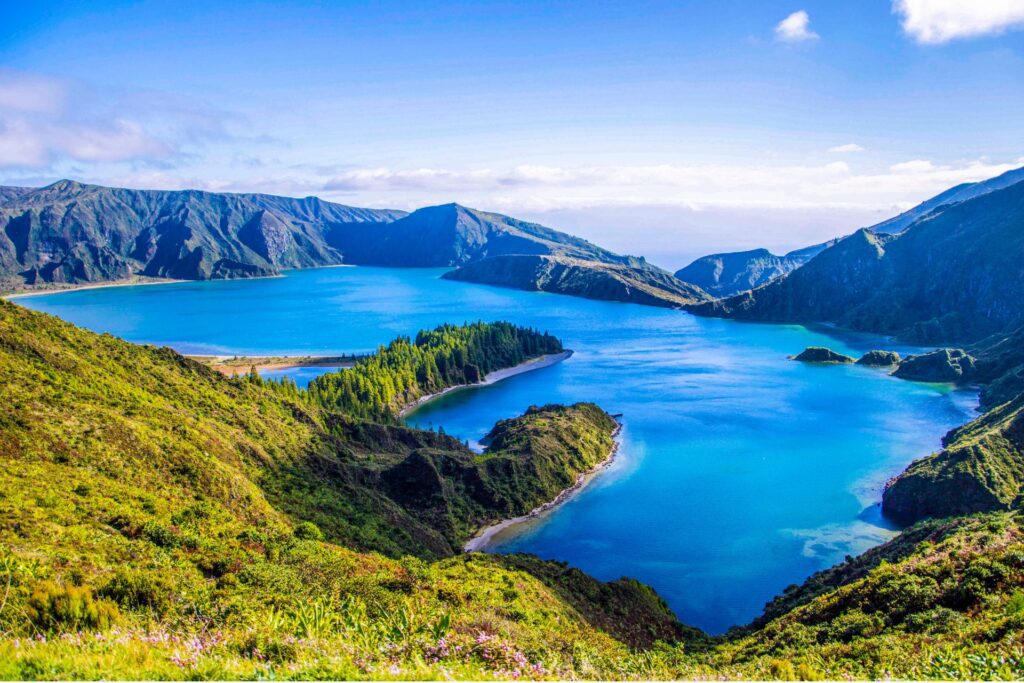

Azores, Portugal (April to October): The Azores offer a serene whale-watching experience with sightings of sperm whales, blue whales, and various dolphin species. The peak season is from April to October when the deep waters around these volcanic islands become a haven for marine life.
- Weather: Generally mild with a mix of sunny and cloudy days and occasional rain.
- Temperature: Averages from 59°F to 77°F (15°C to 25°C).
- Other Details: The weather is relatively stable, but being islands, conditions can change quickly. Light layers are advisable.
| Country | Region/City | Whale Species | Season |
|---|---|---|---|
| Portugal | Azores | Sperm Whales, Blue Whales, Dolphins | April to October |
Scotland’s Hebrides
The Hebrides, off the west coast of Scotland, are known for their rugged beauty and rich marine life. Minke whales, basking sharks, and various dolphins can be spotted in these waters. The Hebrides offer a unique whale-watching experience, combining the charm of Scottish culture with the thrill of spotting whales in the wild.
Hebrides, Scotland (May to September): They are known for encountering minke whales, basking sharks, and dolphins. The best time for whale watching is from May to September, offering a unique combination of Scottish culture and wildlife.
- Weather: Unpredictable, with a mix of sun, clouds, and rain.
- Temperature: Ranges from 50°F to 60°F (10°C to 16°C).
- Other Details: Weather can change rapidly; waterproof clothing and layers are recommended. Windy conditions are common.
| Country | Region/City | Whale Species | Season |
|---|---|---|---|
| Scotland | Hebrides | Minke Whales, Basking Sharks, Dolphins | May to September |
Spain’s Canary Islands
The Canary Islands, located off the coast of northwestern Africa but part of Spain, are renowned for their year-round whale-watching opportunities. The warm waters around these volcanic islands are home to pilot whales, sperm whales, and occasionally orcas. The Canary Islands provide a sunny, warm backdrop for a diverse, vibrant whale-watching experience.
Canary Islands, Spain (Year-round): The Canary Islands are a year-round destination for whale watching, with frequent sightings of pilot whales, sperm whales, and occasionally orcas. The warm, sunny climate and volcanic landscapes make it a unique spot for marine wildlife enthusiasts.
- Weather: Mostly sunny and warm throughout the year.
- Temperature: Averages between 64°F to 75°F (18°C to 24°C).
- Other Details: The climate is generally pleasant, but it can be windy on the water. Sun protection is recommended.
| Country | Region/City | Whale Species | Season |
|---|---|---|---|
| Spain | Canary Islands | Pilot Whales, Sperm Whales, Orcas | Year-round |
The Wonders of Whale Watching in Australia and Oceania
With its vast and diverse marine environments, Oceania is home to some of the world’s most spectacular whale-watching destinations. From the warm waters of Australia to the stunning coasts of New Zealand, these regions offer unparalleled opportunities to witness the majesty of whales in their natural habitats.
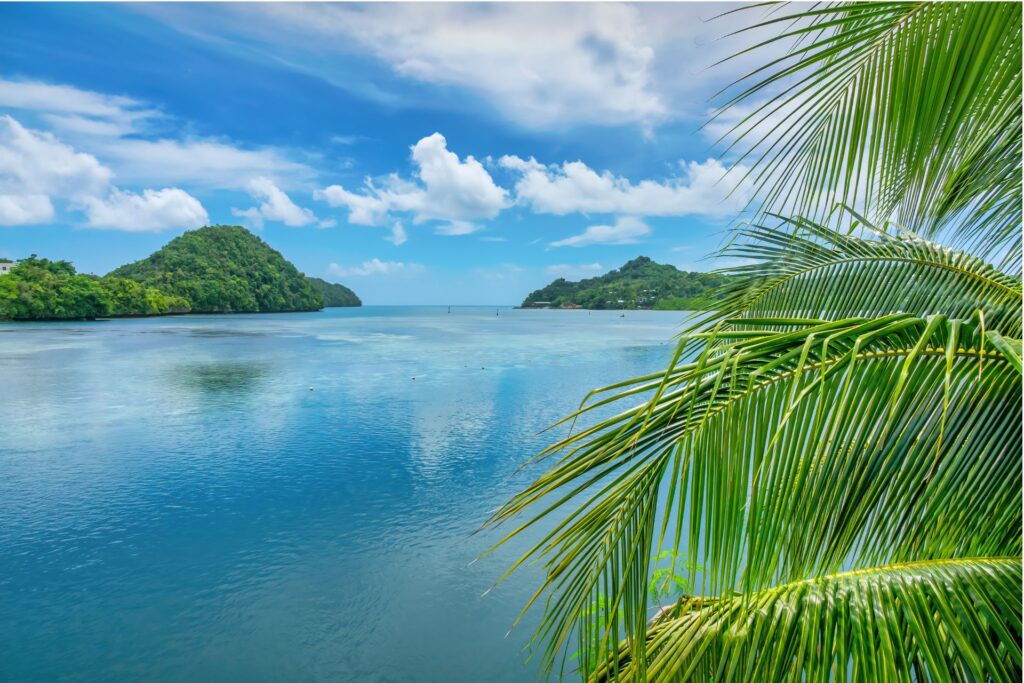

Australia’s Diverse Marine Life
Australia’s coastline is a haven for whale watchers, boasting a variety of species and locations. Hervey Bay, often called the world’s whale-watching capital, is renowned for its humpback whale sightings. The bay’s calm waters provide a sanctuary for these gentle giants, making it an ideal spot for close encounters. The Coral Sea, stretching along the Great Barrier Reef, is another prime location. The rich marine biodiversity here includes whales and many other marine creatures, offering a holistic ocean experience.
Hervey Bay, Australia (July to November): Known as a haven for humpback whales, Hervey Bay in Queensland offers intimate whale-watching experiences. From July to November, these majestic creatures frequent the bay’s calm waters, often seen playing and interacting with boats. The bay’s sheltered waters make it an ideal spot for families and individuals seeking a close encounter with whales.
- Weather: Mostly sunny with occasional rain.
- Temperature: Ranges from 61°F to 77°F (16°C to 25°C).
- Other Details: The climate is generally pleasant, ideal for outdoor activities like whale watching. Light layers are recommended for cooler evenings.
Coral Sea, Australia (June to August): Stretching along the Great Barrier Reef, the Coral Sea is a prime location for spotting dwarf minke and humpback whales. The best time to visit is from June to August. The Coral Sea offers whale watching and a chance to explore the rich biodiversity of the Reef, making it a perfect destination for marine life enthusiasts.
- Weather: Predominantly sunny.
- Temperature: Averages around 68°F to 77°F (20°C to 25°C).
- Other Details: The weather is ideal for snorkeling, diving, and whale watching. Sun protection is essential.
| Country | Region/City | Whale Species | Season |
|---|---|---|---|
| Australia | Hervey Bay | Humpback Whales | July to November |
| Australia | Coral Sea | Dwarf Minke Whales, Humpback Whales | June to August |
New Zealand’s Natural Beauty
New Zealand, particularly the South Island, is a paradise for nature enthusiasts and whale watchers. With its unique underwater topography, Kaikoura is a hotspot for sperm whales, which can be seen year-round. The nutrient-rich waters also attract other species, including humpback whales, orcas, and dolphins. The breathtaking scenery of the South Island, with its mountains meeting the sea, provides a stunning backdrop for whale watching, making it one of the most picturesque whale-watching destinations in the world.
Kaikoura, New Zealand (Year-round): Situated on the South Island’s east coast, Kaikoura is renowned for its sperm whale population, which can be seen throughout the year. The unique underwater topography creates an ideal habitat for these whales. In addition to sperm whales, visitors can also spot humpback whales, orcas, and dolphins against the backdrop of the stunning Kaikoura Ranges.
- Weather: Variable; can be sunny, windy, or rainy depending on the time of year.
- Temperature: Summer averages 59°F to 68°F (15°C to 20°C), winter averages 41°F to 50°F (5°C to 10°C).
- Other Details: Weather can change quickly; layers and waterproof clothing are advisable. Winter months can be colder, especially on the water.
Hauraki Gulf, New Zealand (Year-round): The Hauraki Gulf, near Auckland, New Zealand, offers year-round opportunities to see Bryde’s whales, dolphins, and occasionally orcas. The Gulf’s proximity to Auckland makes it an accessible and popular destination for both locals and tourists. The marine park’s diverse ecosystem provides a unique whale-watching experience with stunning coastal scenery.
- Weather: Generally mild with a mix of sunny and cloudy days, and occasional rain.
- Temperature: Summer averages 64°F to 75°F (18°C to 24°C), winter averages 50°F to 59°F (10°C to 15°C).
- Other Details: The weather is relatively stable, but being a coastal region, conditions can change. Layers are recommended.
| Country | Region/City | Whale Species | Season |
|---|---|---|---|
| New Zealand | Kaikoura | Sperm Whales, Humpback Whales, Orcas | Year-round |
| New Zealand | Hauraki Gulf | Bryde’s Whales, Dolphins, Orcas | Year-round |
Tonga’s Whale Encounters
Tonga, an archipelago in the South Pacific, offers a truly unique whale-watching experience. Renowned for its clear, warm waters and the presence of humpback whales, Tonga is one of the few places in the world where you can swim alongside these magnificent creatures. From July to October, humpback whales migrate to the sheltered waters of Tonga’s islands, such as Tongatapu, ‘Eua, Ha’apai, and Vava’u, to breed and nurse their young.
This intimate encounter with humpback whales in their natural breeding grounds is an experience that resonates deeply with visitors, offering a rare glimpse into the gentle nature of these giants. The islands themselves are a paradise, with their pristine beaches, vibrant coral reefs, and rich Polynesian culture. The combination of breathtaking natural beauty, both above and below the water, and the opportunity to interact closely with humpback whales makes Tonga one of the most extraordinary whale-watching destinations in the world.
Tongatapu, ‘Eua, Ha’apai, Vava’u, Tonga (July to October): Tonga is one of the few places in the world where you can swim with humpback whales. These islands become a sanctuary for humpback whales from July to October, where they come to breed and nurse their young. The experience in Tonga is unique, offering the chance to watch and interact with these gentle giants in their natural habitat. The clear waters and the presence of mother and calf pairs make this destination a once-in-a-lifetime experience for whale enthusiasts.
- Weather: Mostly sunny and warm.
- Temperature: Averages around 75°F to 84°F (24°C to 29°C).
- Other Details: The climate is tropical, with warm, pleasant weather perfect for swimming and snorkeling with whales. Sunscreen and hydration are important.
| Country | Region/City | Whale Species | Season |
|---|---|---|---|
| Tonga | Tongatapu, ‘Eua, Ha’apai, Vava’u | Humpback Whales | July to October |
Latin America’s Whale-Watching Hotspots
With its diverse coastal ecosystems, Latin America is a treasure trove for whale-watching enthusiasts. From the serene lagoons of Mexico to the biodiverse waters of Ecuador, Costa Rica, and Panama, these destinations offer some of the most memorable whale-watching experiences in the world.
Mexico’s Baja California
Baja California in Mexico is a renowned destination for whale watching, especially known for the annual gray whale migration. One of the most famous spots is San Ignacio Lagoon, a sanctuary where gray whales come to breed and nurse their young. Visitors here can have close encounters with these gentle giants, often in the calm and shallow waters of the lagoon. The experience in Baja California is not just about seeing whales; it’s about immersing oneself in the natural beauty and serenity of the region.
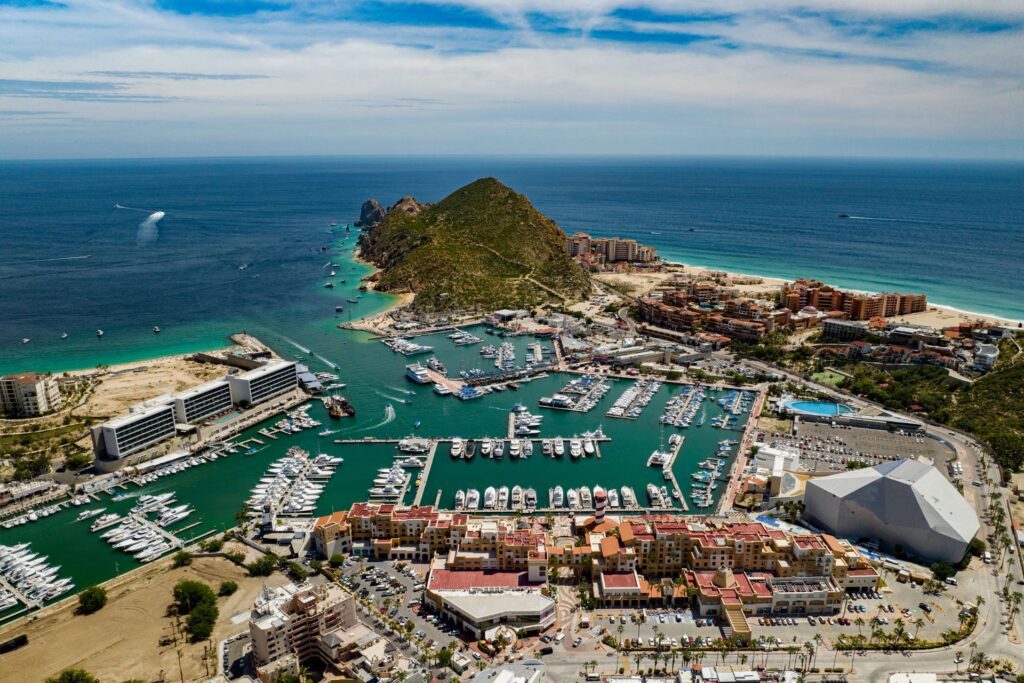

San Ignacio Lagoon, Mexico (December to April): This serene lagoon in Baja California, Mexico, is a world-renowned destination for gray whale watching. During winter, gray whales migrate here to breed and nurse their young, offering visitors a chance for close encounters. The lagoon’s calm and shallow waters make it an ideal nursery for these whales, providing a unique opportunity to observe these majestic creatures in a tranquil and natural setting.
- Weather: Generally sunny with minimal rainfall.
- Temperature: Ranges from 60°F to 75°F (15°C to 24°C).
- Other Details: The climate is mild and comfortable for outdoor activities. Light clothing is suitable, with layers for cooler evenings.
| Country | Region/City | Whale Species | Season |
|---|---|---|---|
| Mexico | San Ignacio Lagoon | Gray Whales | December to April |
The Rich Waters of Ecuador
Ecuador offers a unique whale-watching experience in the Galapagos Islands and the mainland. The Galapagos Islands, with their unparalleled wildlife and pristine environments, are a haven for various whale species, including humpback whales. The mainland coast of Ecuador also provides excellent opportunities to witness the majestic beauty of whales, particularly during the migration season. The combination of rich marine life and the stunning landscapes of Ecuador makes it one of the top whale watching destinations.
Galapagos Islands, Ecuador (June to September): The Galapagos Islands are a haven for diverse marine life, including various whale species. The best time to visit for whale watching is from June to September, when humpback whales and other species frequent these waters. The unique ecosystem of the Galapagos, combined with its rich biodiversity, offers a once-in-a-lifetime whale watching experience.
- Weather: Mild and dry, with occasional mist and rain.
- Temperature: Averages around 70°F to 80°F (21°C to 27°C).
- Other Details: The weather is pleasant for exploring both land and sea. Sun protection and hydration are important.
Mainland Coast, Ecuador (June to September): Along the mainland coast of Ecuador, humpback whales can be seen during their migration season from June to September. The coastal waters provide a spectacular backdrop for observing these magnificent creatures as they breach and play in the ocean.
- Weather: Mostly sunny with occasional rain showers.
- Temperature: Averages around 68°F to 77°F (20°C to 25°C).
- Other Details: The climate is tropical and humid. Lightweight, breathable clothing is recommended.
| Country | Region/City | Whale Species | Season |
|---|---|---|---|
| Ecuador | Galapagos Islands | Various | June to September |
| Ecuador | Mainland Coast | Humpback Whales | June to September |
Costa Rica’s Playa Panama
Costa Rica, known for its rich biodiversity, also offers fantastic whale-watching opportunities. Playa Panama, with its serene beaches and clear waters, is a prime spot for observing humpback whales, especially when they migrate to warmer waters. The natural beauty of Costa Rica and the chance to see these magnificent creatures make it a must-visit destination for nature lovers and whale watchers alike.
Playa Panama, Costa Rica (December to April): In Costa Rica, Playa Panama is a prime location for observing humpback whales. These whales migrate to the warm waters here during the winter months. The serene beaches and clear waters of Playa Panama offer a peaceful and picturesque setting for whale watching, complemented by the natural beauty of Costa Rica.
- Weather: Warm and sunny with little rainfall.
- Temperature: Ranges from 75°F to 90°F (24°C to 32°C).
- Other Details: The weather is ideal for beach activities and whale watching. Sunscreen and light clothing are advisable.
| Country | Region/City | Whale Species | Season |
|---|---|---|---|
| Costa Rica | Playa Panama | Humpback Whales | December to April |
Panama’s Marine Wonders
Panama, particularly the Pearl Islands and Taboga Island, is emerging as a popular whale watching destination. These areas are known for their sightings of humpback whales, especially during the migration season. The Pearl Islands offer a tranquil escape with lush landscapes and clear waters, while Taboga Island, known as the ‘Island of Flowers’, provides a picturesque setting for whale watching. The warm waters around these islands are ideal for spotting whales and enjoying the natural beauty of Panama.
Pearl Islands, Panama (July to October): The Pearl Islands in Panama are a tranquil destination for spotting humpback whales, especially from July to October. The lush landscapes and clear waters of the islands create a serene environment for whale watching, offering a chance to see these majestic creatures in a peaceful setting.
- Weather: Tropical climate with sunny and rainy periods.
- Temperature: Averages around 77°F to 88°F (25°C to 31°C).
- Other Details: The weather can be humid; lightweight clothing and rain gear are recommended.
Taboga Island, Panama (July to October): Known as the ‘Island of Flowers’, Taboga Island provides a picturesque backdrop for whale watching. From July to October, humpback whales are commonly seen in the waters around the island, making it an ideal spot for those looking to combine natural beauty with marine exploration.
- Weather: Similar to the Pearl Islands, with a mix of sun and rain.
- Temperature: Averages around 77°F to 88°F (25°C to 31°C).
- Other Details: The climate is tropical. Sun protection, hydration, and rain gear for sudden showers are key.
| Country | Region/City | Whale Species | Season |
|---|---|---|---|
| Panama | Pearl Islands | Humpback Whales | July to October |
| Panama | Taboga Island | Humpback Whales | July to October |
Argentina: Southern Hemisphere’s Whale Haven
This region is renowned for its southern right whale sightings. The whales come close to the shore, making it an excellent spot for shore-based whale watching.
This region is famous for its southern right whale sightings. The whales come close to the shore, offering exceptional viewing opportunities.
- Weather: Variable, ranging from clear to overcast, with occasional winds.
- Temperature: Ranges from 41°F to 59°F (5°C to 15°C).
- Other Details: The weather can be chilly, especially in the early months. The sea can be rough at times. Warm clothing and windbreakers are advisable.
| Country | Region/City | Whale Species | Season |
|---|---|---|---|
| Argentina | Puerto Madryn, Valdez Peninsula | Southern Right Whales | June to December |
Chile: A Gateway to Patagonian Whale Watching
The waters around Chiloé Island are a key feeding ground for blue whales and humpbacks. The island’s rich cultural heritage adds to the whale-watching experience.
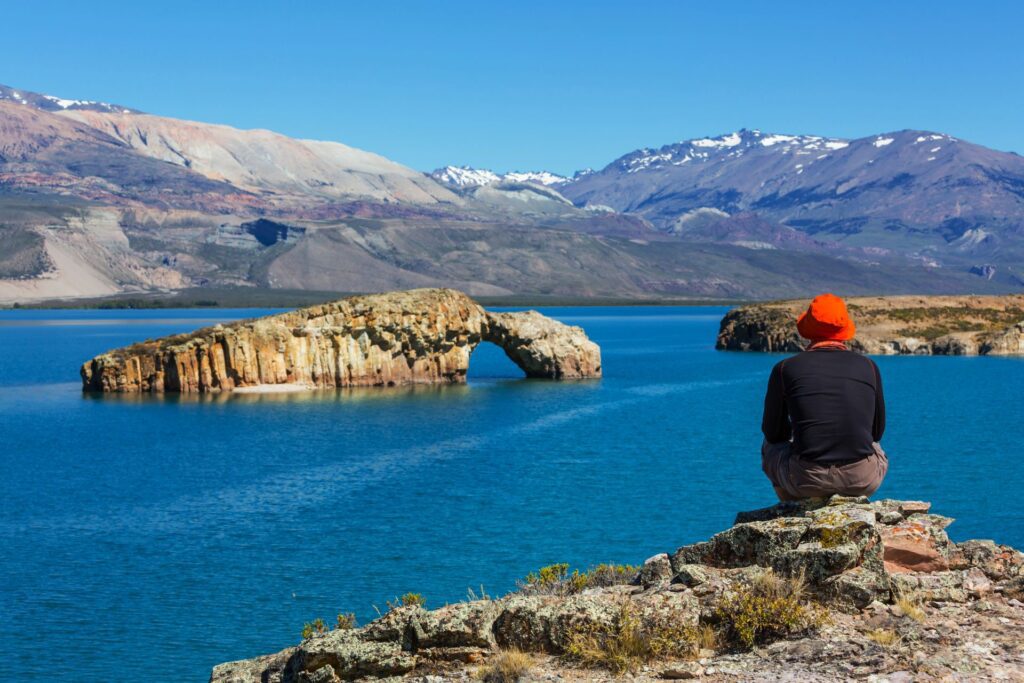

Chiloé Island is a key feeding ground for blue and humpback whales. The island’s rich cultural heritage adds to the unique whale-watching experience.
- Weather: Mostly overcast with frequent rain showers.
- Temperature: Ranges from 50°F to 64°F (10°C to 18°C).
- Other Details: The climate is generally cool and wet. The sea can be choppy. Waterproof clothing and layers are recommended.
| Country | Region/City | Whale Species | Season |
|---|---|---|---|
| Chile | Chiloé | Blue Whales, Humpback Whales | December to April |
Caribbean’s Marine Wonders
Dominican Republic: Caribbean Whale Watching Adventure
Samana Peninsula (January to March): The Samana Peninsula is among the best places in the Caribbean to see humpback whales, especially during their mating season. The bay’s warm waters are ideal for whale calves.
The Samana Peninsula is a premier Caribbean destination for humpback whale watching, especially during their mating season. The bay’s warm waters are ideal for whale calves.
- Weather: Mostly sunny with occasional tropical showers.
- Temperature: Ranges from 75°F to 84°F (24°C to 29°C).
- Other Details: The climate is tropical and humid. The sea conditions are usually calm, ideal for whale watching. Light clothing and sun protection are essential.
Turks and Caicos: Tropical Whales in Crystal Clear Waters
Turks and Caicos (January to April): These islands offer a unique opportunity to see humpback whales in clear Caribbean waters. The whales pass through these islands during their migration, providing excellent viewing chances.
These islands offer a unique opportunity to see humpback whales in clear Caribbean waters. The whales pass through these islands during their migration, providing excellent viewing chances.
- Weather: Predominantly sunny with minimal rainfall.
- Temperature: Ranges from 75°F to 85°F (24°C to 29°C).
- Other Details: The climate is tropical, with a gentle sea breeze. The waters are clear and calm, perfect for whale watching. Sunscreen and light clothing are recommended.
| Country | Region/City | Whale Species | Season |
|---|---|---|---|
| Dominican Republic | Samana Peninsula | Humpback Whales | January to March |
| Turks and Caicos Islands | Grand Turk, Salt Cay | Humpback Whales | January to April |
Africa’s Hidden Whale-Watching Treasures
Often celebrated for its terrestrial wildlife, Africa also offers some of the world’s most spectacular whale watching destinations. The continent’s diverse coastal regions provide unique opportunities to observe these majestic marine mammals in their natural habitat.
South Africa’s Whale Coast
South Africa’s Whale Coast is a haven for whale watchers. Hermanus, often referred to as the whale-watching capital of the world, offers some of the best shore-based whale-watching opportunities. The town hosts an annual whale festival, celebrating the return of the Southern Right Whales to these waters. Another gem along the Whale Coast is the Garden Route, known for its stunning landscapes and diverse marine life. The coastal waters here are frequented by various whale species, making it a must-visit destination for enthusiasts.
Hermanus: This coastal town in South Africa is renowned for its exceptional shore-based whale watching. Southern Right Whales are commonly seen from June to December, often just meters from the shore. The annual whale festival here celebrates these magnificent creatures, making Hermanus a vibrant and exciting destination for whale enthusiasts.
- Weather: Mostly sunny with occasional windy days.
- Temperature: Ranges from 59°F to 68°F (15°C to 20°C).
- Other Details: The weather is generally pleasant, though it can be cool, especially in the early and later months of the season. A jacket is recommended for boat trips.
Garden Route: Stretching along the South African coast, the Garden Route offers breathtaking scenery and diverse marine life. Various whale species, including Southern Right, Humpback, and Bryde’s whales, can be spotted from May to December. The combination of stunning landscapes and abundant marine life makes the Garden Route a captivating whale watching destination.
- Weather: Varied, with sunny days and occasional rain.
- Temperature: Averages around 59°F to 77°F (15°C to 25°C).
- Other Details: The climate is mild, but it can be unpredictable. It’s advisable to be prepared for both sunny and rainy conditions. Layered clothing is recommended.
Morocco’s Coastal Wonders: Whale Watching in North Africa
Morocco (March to October): The Moroccan coast, particularly near Agadir and Essaouira, offers chances to see sperm whales and occasionally killer whales. The rich Atlantic waters here support a diverse marine ecosystem.
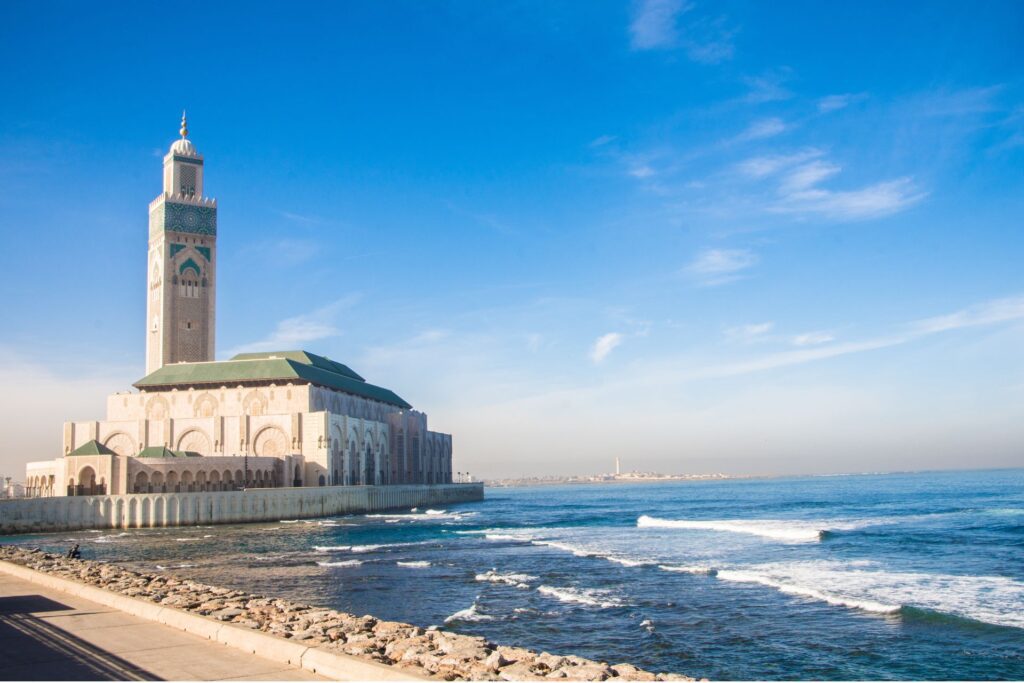

Morocco’s coastline, especially near Agadir and Essaouira, offers opportunities to see sperm and killer whales. The Atlantic waters here are teeming with marine life, making it a unique whale-watching spot.
- Weather: Mostly sunny, with a low chance of rain.
- Temperature: Ranges from 64°F to 82°F (18°C to 28°C).
- Other Details: The climate is generally mild, with a pleasant sea breeze. The sea is usually calm and suitable for whale watching. Sun protection and light clothing are recommended.
| Country | Region/City | Whale Species | Season |
|---|---|---|---|
| South Africa | Hermanus | Southern Right Whales | June to December |
| South Africa | Garden Route | Various | May to December |
| Morocco | Agadir, Essaouira | Sperm Whales, Killer Whales | March to October |
Madagascar’s Untouched Paradise
With its pristine and largely untouched natural beauty, Madagascar is an emerging whale-watching destination. Around Nosy Be, an island off the northwest coast, visitors can witness humpback whales during their migration season. The clear waters and the region’s rich biodiversity offer a unique whale-watching experience where the ocean’s wilderness meets the island’s tranquility. Madagascar’s commitment to preserving its natural heritage makes it a particularly special place for respectful and sustainable whale watching.
Nosy Be: Off the northwest coast of Madagascar, Nosy Be is a tropical paradise and a fantastic spot for whale watching. During the months of July to September, humpback whales migrate to these warm waters to breed and calve. The island’s unspoiled natural beauty and the clear, blue waters provide a serene backdrop for observing these majestic creatures in a tranquil and untouched environment.
- Weather: Predominantly sunny and dry.
- Temperature: Ranges from 70°F to 85°F (21°C to 29°C).
- Other Details: The weather is typically tropical and warm, ideal for spending time on the water. Sun protection is essential, and lightweight clothing is suitable for warm temperatures.
| Country | Region/City | Whale Species | Season |
|---|---|---|---|
| Madagascar | Nosy Be | Humpback Whales | July to September |
Asia’s Emerging Whale Watching Destinations
With its vast and diverse marine environments, Asia is becoming increasingly popular for whale watching. This section explores some of the continent’s emerging hotspots, where the majestic beauty of whales can be observed in their natural habitats.
Sri Lanka’s Blue Whale Highways
Sri Lanka is rapidly gaining recognition as one of the world’s premier destinations for watching blue whales. The waters off Mirissa and Trincomalee are particularly famous for their ‘blue whale highways’, where these enormous creatures are frequently spotted. Mirissa, located on the southern coast, offers boat tours that bring visitors up close to the largest animal on the planet. Trincomalee, on the northeastern coast, is another excellent spot known for its clear waters and the presence of blue whales and other marine species. The experience of seeing these gentle giants in the warm waters of the Indian Ocean is truly unforgettable.
Mirissa, Sri Lanka (November to April): This coastal town in Sri Lanka is a prime spot for blue whale watching. From November to April, the waters off Mirissa become a playground for these majestic creatures. The boat tours here offer an opportunity to witness the blue whales in their natural habitat, often accompanied by playful dolphins.
- Weather: Mostly sunny with occasional rain showers.
- Temperature: Ranges from 77°F to 86°F (25°C to 30°C).
- Other Details: The weather is typically tropical and humid. The sea can be calm, making it ideal for whale watching. Light, breathable clothing and sun protection are recommended.
Trincomalee, Sri Lanka (May to October): Located on the northeastern coast of Sri Lanka, Trincomalee is another hotspot for blue whale sightings. The best time to visit is from May to October when the sea conditions are ideal for spotting these giants. The area’s natural beauty and the presence of other wildlife make it a memorable destination for whale watchers.
- Weather: Warm and sunny, with minimal rainfall.
- Temperature: Averages around 81°F to 93°F (27°C to 34°C).
- Other Details: The climate is hot and dry during these months. The sea conditions are generally calm, perfect for spotting whales. Sunscreen, hats, and hydration are essential.
| Country | Region/City | Whale Species | Season |
|---|---|---|---|
| Sri Lanka | Mirissa | Blue Whales | November to April |
| Sri Lanka | Trincomalee | Blue Whales | May to October |
Japan’s Whale-Friendly Waters
Japan, particularly regions like Okinawa and the Ogasawara Islands, offers unique whale-watching experiences. Okinawa, with its subtropical climate and crystal-clear waters, is a haven for humpback whales, especially during their breeding season. The Ogasawara Islands, a remote archipelago located in the Pacific Ocean, provide a serene and unspoiled environment for observing various whale species, including sperm whales and blue whales. The commitment to sustainable and respectful whale-watching practices in these regions ensures visitors’ responsible and enriching experience.
Okinawa, Japan (December to April): The subtropical waters around Okinawa are a haven for humpback whales, particularly from December to April. During this season, these whales come to breed and nurse their young, providing a spectacular show for visitors. The clear waters and the rich marine biodiversity enhance the whale-watching experience.
- Weather: Mild and mostly sunny, with occasional rain.
- Temperature: Ranges from 59°F to 73°F (15°C to 23°C).
- Other Details: The subtropical climate is pleasant for outdoor activities. Light layers are advisable as temperatures can vary.
Ogasawara Islands, Japan (Year-round): These remote islands, also known as the Bonin Islands, are located in the Pacific Ocean and offer year-round opportunities to see various whale species, including sperm whales and blue whales. The isolation of the Ogasawara Islands makes them a unique destination for those seeking an unspoiled and intimate whale-watching experience.
- Weather: Varies by season; generally mild with some rainy periods.
- Temperature: Averages around 64°F to 81°F (18°C to 27°C) throughout the year.
- Other Details: The weather can be unpredictable due to the islands’ remote location. It’s advisable to be prepared for both sunny and rainy conditions. The sea conditions can vary, so checking local forecasts is recommended.
| Country | Region/City | Whale Species | Season |
|---|---|---|---|
| Japan | Okinawa | Humpback Whales | December to April |
| Japan | Ogasawara Islands | Various | Year-round |
Russia’s Far East: A Hidden Whale Watching Paradise
Russia’s Far East is a treasure trove for nature enthusiasts, offering some of the most unique and secluded whale watching destinations in the world. This section explores the remarkable regions where visitors can experience the majesty of whales in their natural habitat.
From the volcanic shores of Kamchatka to the remote beauty of the Shantar Islands, these regions provide not only a chance to see various whale species but also an adventure into some of the most pristine and unexplored parts of the world.
Kamchatka Peninsula (June to September): The Kamchatka Peninsula, a land of volcanoes and pristine wilderness, is one of Russia’s most spectacular whale watching destinations. The waters around Kamchatka teem with marine life, including orcas, humpback, and gray whales. The best time to visit is from June to September when the whales are most active.
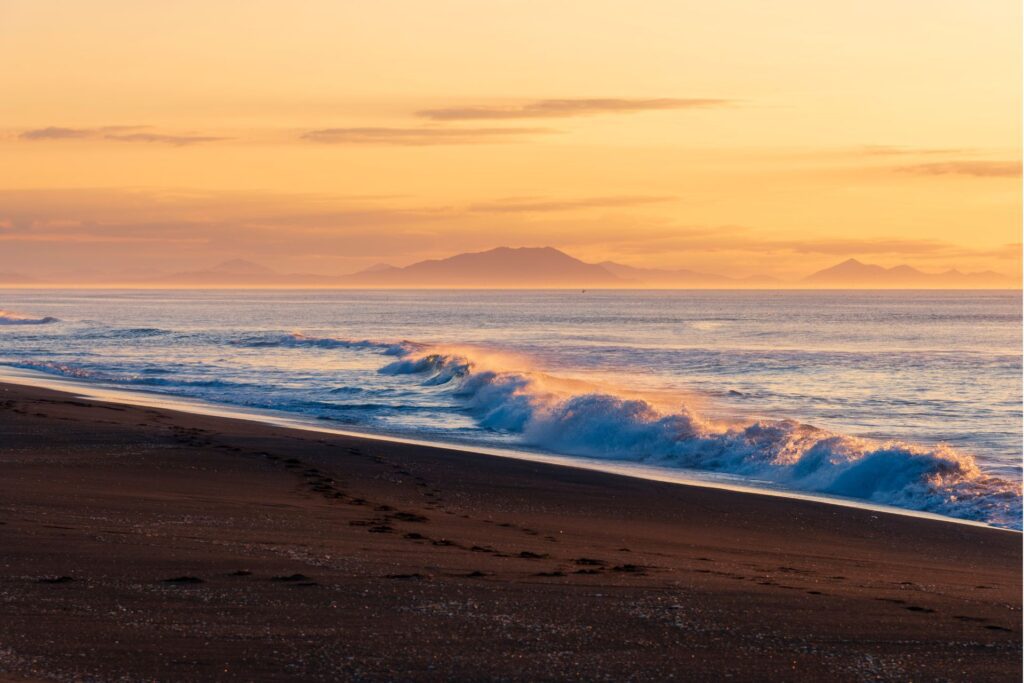

This rugged and volcanic peninsula offers a spectacular backdrop for whale watching. The nutrient-rich waters here are a haven for orcas, humpback whales, and gray whales. Visitors can expect to see these majestic creatures amidst stunning natural scenery, including towering volcanoes and unspoiled coastlines.
- Weather: Predominantly mild with a mix of sunny and cloudy days. Occasional rain showers.
- Temperature: Ranges from 50°F to 65°F (10°C to 18°C).
- Other Details:
- Wind: Can be breezy, especially near the coast.
- Sea Conditions: Generally calm but can vary; maritime weather can be unpredictable.
Commander Islands (June to October): Located off the Kamchatka coast, the Commander Islands are a haven for diverse marine species. These remote islands offer unique opportunities to see orcas, humpback whales, and the rare North Pacific right whales. The whale watching season here extends from June to October, providing a serene and intimate wildlife experience.
These remote islands offer a unique and intimate whale-watching experience. The diverse marine ecosystem here is home to orcas, humpback whales, and the elusive North Pacific right whales. The islands’ isolation contributes to their unspoiled beauty, making them a perfect destination for nature lovers.
- Weather: Generally cool with a mix of overcast and clear days. Rain is common.
- Temperature: Averages around 45°F to 60°F (7°C to 15°C).
- Other Details:
- Wind: Often windy, given the open ocean location.
- Sea Conditions: Can be rough; suitable clothing and sea sickness precautions are advisable.
Sakhalin Island (Summer Months): Sakhalin Island, north of Japan, is another prime whale watching destination in Russia’s Far East. The island’s northeastern coast is particularly known for gray whale sightings, especially during summer. The remote beaches and the surrounding waters provide a peaceful setting for observing these gentle giants.
With its rugged coastline, Sakhalin is a hotspot for gray whale sightings. The island’s remote beaches and surrounding waters provide a serene setting for observing these whales, especially during the summer months when they are most active.
- Weather: Mild summer weather with occasional rain.
- Temperature: Typically ranges from 55°F to 70°F (13°C to 21°C).
- Other Details:
- Wind: Moderate winds are common.
- Sea Conditions: Varies, with some days calm and others more turbulent.
Solovetsky Islands (July and August): While not as renowned as other locations in the Far East, the Solovetsky Islands in the White Sea offer a unique chance to see beluga whales. The best time for whale watching here is in the summer, particularly in July and August, when the belugas are more commonly sighted near the islands.
Located in the White Sea, these islands offer a chance to see beluga whales in their natural habitat. The best time to visit is during summer, when the belugas are more commonly sighted near the islands.
- Weather: Variable, with a mix of sunny, cloudy, and rainy days.
- Temperature: Around 50°F to 65°F (10°C to 18°C).
- Other Details:
- Wind: Can be breezy, especially on the water.
- Sea Conditions: Generally calm but can change quickly.
Shantar Islands (July to September): The Shantar Islands in the Sea of Okhotsk are a hidden gem for whale watchers. Known for their populations of Western Gray Whales, the islands also attract orcas, humpback whales, and bowhead whales. The best whale-watching period is from July to September, offering visitors a chance to witness these magnificent creatures in a pristine and untouched natural environment.
The Shantar Islands are a pristine and relatively undiscovered whale watching destination. Known for their Western Gray Whale populations, these islands attract orcas, humpback, and bowhead whales. The best time for whale watching is in the untouched natural environment of the Sea of Okhotsk from July to September.
- Weather: Generally mild with a fair amount of sunny days, interspersed with rainy periods.
- Temperature: Averages from 50°F to 65°F (10°C to 18°C).
- Other Details:
- Wind: Moderate to strong winds are possible.
- Sea Conditions: Can be unpredictable; maritime weather changes rapidly.
| Country | Region/City | Whale Species | Season |
|---|---|---|---|
| Russia | Kamchatka Peninsula | Orcas, Humpback Whales, Gray Whales | June to September |
| Russia | Commander Islands | Orcas, Humpback Whales, North Pacific Right Whales | June to October |
| Russia | Sakhalin Island | Gray Whales | Summer Months |
| Russia | Solovetsky Islands | Beluga Whales | July and August |
| Russia | Shantar Islands | Western Gray Whales, Orcas, Humpback Whales, Bowhead Whales | July to September |
Conclusion
As we conclude our global journey through the most spectacular whale watching destinations, we are reminded of the sheer beauty and excitement that these adventures offer. Each destination, with its unique charm and diverse marine life, provides a visual feast and an invaluable educational experience. From the Arctic’s icy waters to the Caribbean’s tropical seas, whale watching brings us closer to these majestic creatures and deepens our understanding of the marine ecosystem.
Whale watching is more than just a tourist activity; it’s a chance to witness the grandeur of nature and the intricate dance of life in the oceans. Whether you’re an avid marine enthusiast, a photographer looking for the perfect shot, or a family seeking a unique vacation, these whale watching destinations promise unforgettable experiences.
Embark on Your Whale-Watching Adventure Today
Are you ready to embark on your next great adventure? Explore our detailed regional guides and find the perfect whale-watching destination for you. Our website makes it easy to discover the wonders of whale watching across the globe. From the rugged coasts of Alaska to the serene waters of New Zealand, your next marine adventure awaits.
Don’t miss the opportunity to come face-to-face with these gentle giants of the sea. Book your whale-watching tour today and prepare to be mesmerized by the beauty of the oceans and their inhabitants.

